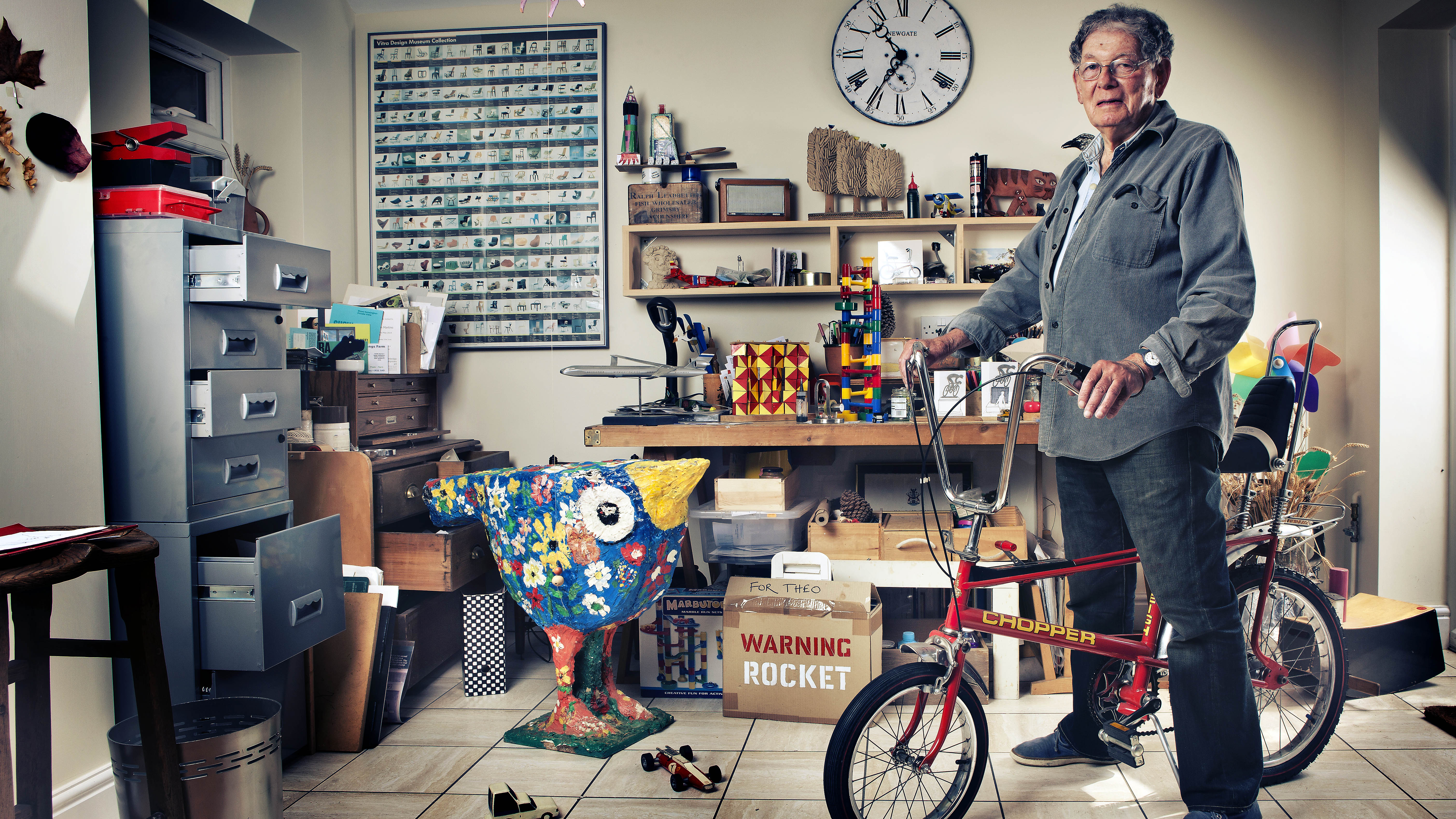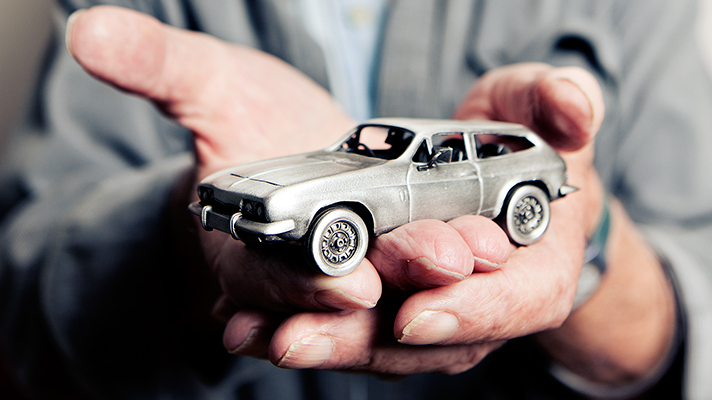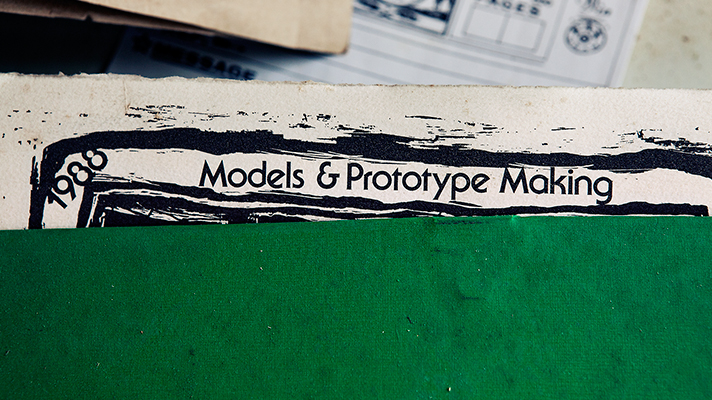
RIP Tom Karen: TG interviews the legendary Seventies designer
Celebrated car and toy designer Tom Karen passed away earlier this week. From 2014, here's the time we got to meet him.
This interview was first published in Issue 258 of Top Gear magazine (2014)
Who'd have thought the makers of the Robin three-wheeler could come up with something as good-looking as the Scimitar GTE? In 1968, it was early proof that estate cars could look a bit sexy, it established the idea of a modern shooting brake and it gave the car world its first rising waistline - now much-copied on everything from runabouts to crossovers. It was also the car in which Princess Anne was caught speeding at 90mph on the M1. One obviously approved...
But in fact the GTE, though a Reliant, was actually the vision of industrial designer Tom Karen. Asked to turn the Scimitar coupe into something more practical yet still pretty, the GTE was his answer. It was, he says, some of his best work. And yet as boss of Ogle Design, his roster of clients went way beyond carmakers.
Throughout the Sixties and Seventies, Karen's sketchbooks bulged with future classics: the Raleigh Chopper bicycle, the Bush TR130 radio, the Marble Run children's game, Luke Skywalker's Landspeeder in Star Wars (based on another of his creations, the orange Bond Bug), and even a Popemobile.
In 2014, Ogle Design turns 60, and Tom turns 88. But unlike some grandads who talk wistfully about the way things used to be, Tom is still reeling in the future. A walk around his mind is educational, fantastical and - as you'll see - slightly exhausting...
You've designed an awful lot of stuff. But let's start with the GTE - it was probably the most important...
In 1968, an estate car was for travelling salesmen and people with dogs. A respectable carmaker - BMW, Jaguar, Mercedes - wouldn't dream of doing such a thing. But people discovered that, aerodynamically, the GTE worked terribly well. It had lower drag than a coupe, and you had headroom in the back. It also had a rising waistline. Now, almost every car has a rising waistline. It took a few years to percolate through...
How did you end up at Ogle?
I misspent 10 years in the aircraft industry. Being a lousy mathematician, I wasn't suited to it. Then I managed to get into the Central School of Art and Design, and through that I got a job at Ford in the Styling Centre. After that, I worked for Hotpoint and for Philips. But then one day, poor old David Ogle was killed in a car crash, and I had a phone call asking if I would go for a talk with the directors of his company. A week later, I had the job of MD and chief designer.
What was Ogle all about?
Top Gear
Newsletter
Thank you for subscribing to our newsletter. Look out for your regular round-up of news, reviews and offers in your inbox.
Get all the latest news, reviews and exclusives, direct to your inbox.
It was an amazing place. Around the same time as designing the GTE, we were doing work for Electrolux, Bush radio and Philips. At one time, you could partly furnish a house with things we designed. You could have a cooker, a washing machine, a fridge, a vacuum cleaner, a radio, a bath and a motorcar. All designed at Ogle. We provided quite a big service for mankind.
Car design has changed a lot since then...
A long time ago, at the Geneva motor show - when it was in wooden buildings - I would walk around and look for cars that were well-designed. There weren't that many. Nowadays, most cars hit a pretty high standard. Design has come on in quite a good way.
But don't you miss the old days?
When I was at Ford, I was doing advanced styling, and you could do any kind of crazy car you wanted. Then Chrysler came out with the cars with the big fins, and in my youthful enthusiasm I thought they were great. I think, at the moment, designers are flailing about trying to make interesting shapes in the side of the body and seeing what clever tricks they can do with headlamps, and tail-lights that wrap around in all kinds of ways. I'm not sure that's the kind of gimmick that enhances a car.
So what's the key to good car design?
The art is to make virtues out of necessities. Success and satisfaction come from making something out of the limitations. I worship good form. Form is form is form. Whether it's a radio, a bath or a motorcar.
Over the years, what would you have changed about car design?
When I was at Ford and they wanted to present a new model to management, they would put a full-size model on a turntable, and management would look at it from all angles and decide if they liked it or not. What they never did was put a person inside to show how the driver would be framed. So you'd see cars where the head of the driver is only just above the waistline or hidden by the B-post, and I think that's terribly unflattering.
So you'd rather show off the driver?
Yes, to make sure the driver is framed in a really attractive way - so they can see well, and be seen well. People love some old cars where the waistline is down to elbow level, because they're sitting on top and feel in command, like the Queen of Sheba. I explored that thinking when we did the Leyland trucks, with the focus and emphasis around the driver. When I worked for Renault, I did the same kind of thing on the Trafic van. I recognise that some people like to be cocooned inside the car, but it's never been my kind of approach.
So what are your inspirations?
You can see the language of Henry Moore's sculptures reflected in good car design. The forms have to be soft, but there always has to be some tightness. And you can't have lines that don't have a logical beginning and end. The same applies to designing a vehicle body as it did for one of Henry Moore's sculptures, except, of course, that doing a vehicle body is more difficult.
How so?
Moore never had to worry about legal requirements and the choice of materials. He just had bronze. In a car, you have steel, glass, rubber, plastic... and shutlines. Bad shutlines can destroy a nice shape. And because cars are shiny and reflect everything around them, that has to be taken into account. And Henry Moore didn't have to worry about aerodynamics...
So you can apply universal rules, no matter what you're designing?
Yes. Even a washing machine - and I've done those - must be tactile. So that people want to touch them in the same way as a good sculpture. Not only to look at them, but to touch... to fondle them, if you like. If it's a radio, you want to think, "Yes, I'll handle and operate it."
There's a youthful, fantastical quality to your designs. Why's that?
It may be because I was deprived of my toys before I was quite ready, when we left Czechoslovakia. We left one night when the Germans came in March 1939, and I could take only a few small models with me. I left everything else behind, including my little electric Bugatti, a replica of the Type 35. So I think there's a certain childish enthusiasm about the way I approach design, which is why I wanted to design toys.
You did crash-test dummies, too...
We made gorgeous dummies! They were really nice. And very sophisticated. On our dummy, every part of the body had to have the right weight and centre of gravity. The movements and the articulation of the joints had to be right. They even used corpses to weigh the limbs. And inside the chest, the ribcage was reproduced, and the tummy below was soft. The limbs had bone and flesh structures and skin. They were amazing pieces of work. We did some child dummies, and even a little baby dummy. I took him home, and my two daughters nursed him like a little baby and made a cot to put him in.
Is there anything you won't design?
I have about 90 sketchbooks that I doodled in over four decades. In successive pages, I go from motorcars to bits of furniture to toys. Then, when a challenge came along, I could draw on some of that thinking and apply it from one product to another. I was semi-prepared for almost any product that came along. They add up to about 4,500 pages of sketches, and about probably a third are motorcars.
What's in there?
Have you seen my floating city? There are countries that are short on land but have plenty of sheltered water. Many are at risk of flooding as sea levels rise, and in some places there's the risk of earthquakes. If you have something floating in the water, you don't have to worry about any of those things. What I'm planning is a great big circular ring with accommodation, shops, medical centres and so on. In the middle of this doughnut would be a green space for sport and entertainment. It could be built using ship-building techniques. There would be some sort of flexible bridge to the mainland, or you could lower a boat into the water and toddle along.
Anything else?
I'm certain that the next generation of aircraft - for 200-plus passengers - will have a flat fuselage, which can produce lift, so you have less dependence on heavy, expensive wings. I'm not alone in thinking about that. So I've designed an elegant aircraft with three horizontal bubbles to make up the fuselage. I'm sure you'll see it in 20 years from now, instead of the cigar shapes we have today...
Images: Alex Lake
Trending this week
- Car Review
BMW 1 Series
- Top Gear's Top 9
Nine dreadful bits of 'homeware' made by carmakers










